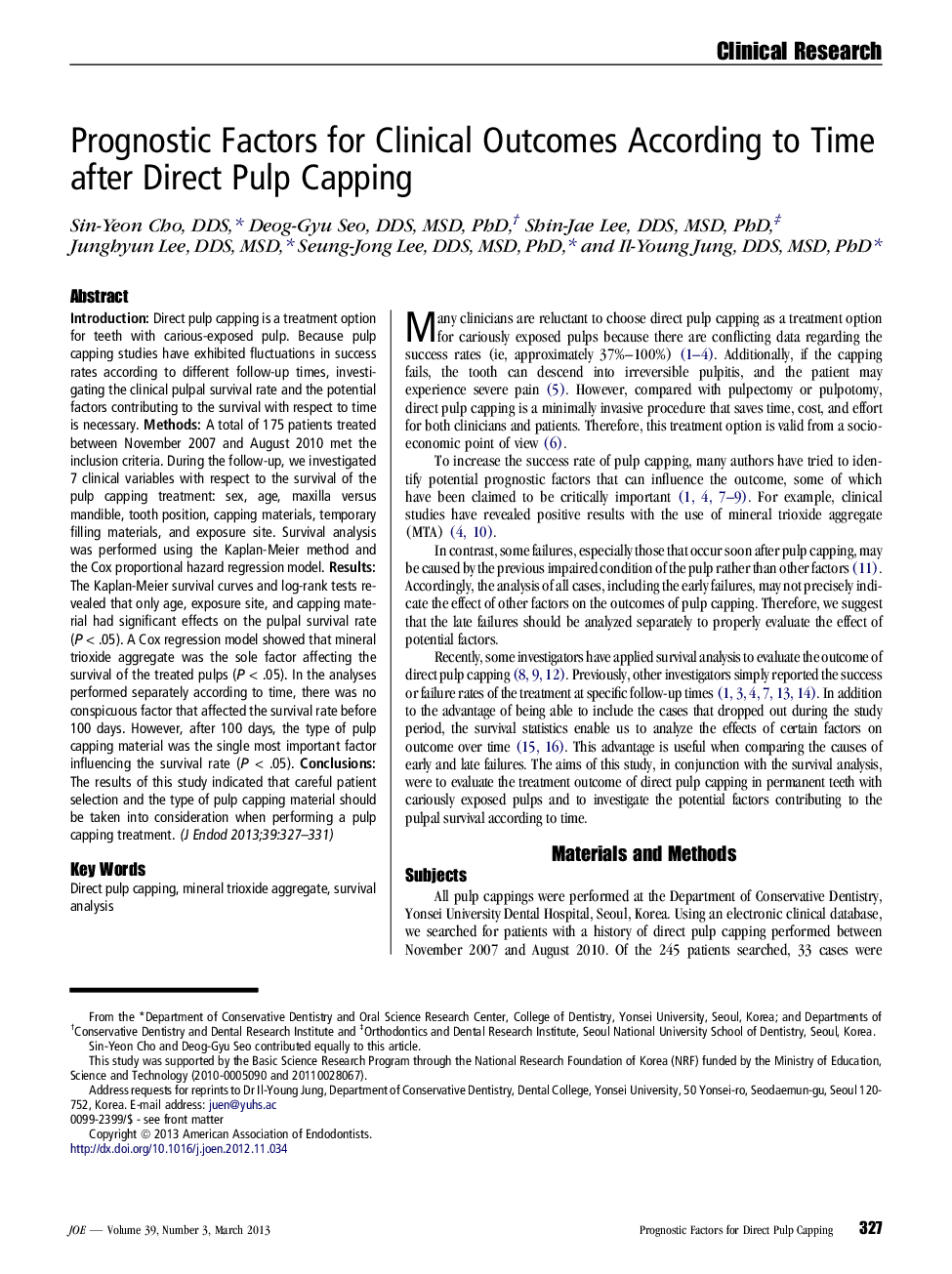| Article ID | Journal | Published Year | Pages | File Type |
|---|---|---|---|---|
| 3148440 | Journal of Endodontics | 2013 | 5 Pages |
IntroductionDirect pulp capping is a treatment option for teeth with carious-exposed pulp. Because pulp capping studies have exhibited fluctuations in success rates according to different follow-up times, investigating the clinical pulpal survival rate and the potential factors contributing to the survival with respect to time is necessary.MethodsA total of 175 patients treated between November 2007 and August 2010 met the inclusion criteria. During the follow-up, we investigated 7 clinical variables with respect to the survival of the pulp capping treatment: sex, age, maxilla versus mandible, tooth position, capping materials, temporary filling materials, and exposure site. Survival analysis was performed using the Kaplan-Meier method and the Cox proportional hazard regression model.ResultsThe Kaplan-Meier survival curves and log-rank tests revealed that only age, exposure site, and capping material had significant effects on the pulpal survival rate (P < .05). A Cox regression model showed that mineral trioxide aggregate was the sole factor affecting the survival of the treated pulps (P < .05). In the analyses performed separately according to time, there was no conspicuous factor that affected the survival rate before 100 days. However, after 100 days, the type of pulp capping material was the single most important factor influencing the survival rate (P < .05).ConclusionsThe results of this study indicated that careful patient selection and the type of pulp capping material should be taken into consideration when performing a pulp capping treatment.
